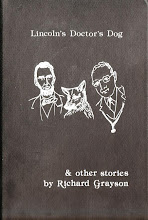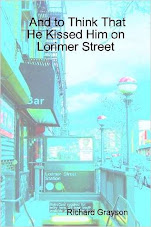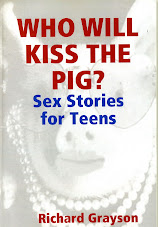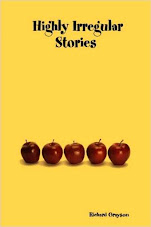
We missed the grand opening of Valley Metro's long-awaited light rail service on Saturday, but we weren't sorry because of that day's swarm of newbie mass transit riders.
(Photo of Saturday's crowd courtesy of 57 Channels' "My first PHX light-rail ride")

Tens of thousands of people crowded the stations from northwest Phoenix through Mesa, and there were speeches and performances, balloons and other fun, but mostly we heard people had trouble getting on the light rail, learning the thrill those of us who take the L train in Williamsburg on weekday mornings experience: standing on the platform watching two or three trains stop until we're finally able to cram into one jam-packed one. (Luckily, two days a week, we simply squeeze in at Lorimer Street and are popped out when the doors open on First Avenue for our workplace destination.)

One of our oldest and dearest friends from Brooklyn, Satnam, reported that she and her young daughter waited until 2 p.m. on Saturday to get to the light rail. But:
It was so crowded we couldn't get on the eastbound tram so we took the westbound one to Christown Mall. Then when we wanted to return we had to take the express bus back as there were so many people waiting to get on the tram going back. So, we just took the express bus back to our stop right across from the Heard Museum.

We had to get back to Apache Junction by mid-morning today, but we were determined to try out the light rail during an actual rush hour - besides, for the first few days, the fare is quite reasonable for us, as it's free. So before dawn we set out from the boonies of Pinal County in the Chevy Cavalier we brought over from Fort Lauderdale when we moved here in 2005 to test-ride Phoenix's new mass transit system, which some expect to transform the Valley as nothing has since Fedders invented air conditioning.

The closest station to us in the far East Valley is the Sycamore/Main Street eastern terminus. Eventually - perhaps by 2015 - the light rail will extend east to the Superstition Springs Mall on Power Road, seven miles from us on our Ironwood Road exit on U.S. 60/the Superstition Freeway.

The Sycamore/Main Street station to us is really Dobson Road, which is ten miles further west than Power Road. We know this because during the 2000-01 academic year our address was 1651 S. Dobson Road, just south of the freeway. We have a bad habit of bringing cars with us every time we move from Florida to Arizona, and in June 2000, before we went to spend the summer in New York like a sensible person, we mistakenly took a powder blue 1993 Mercury Montego cross-country with us.
This car had its own bad habit: it would just stop, for no reason. Imagine getting stuck on a then-deserted stretch of freeway in 112-degree August heat with no cell phone and you will know what fun we faced. Less uncomfortably, but more inconveniently, the car would just refuse to start some mornings when we taught 7:40 a.m. classes at Arizona State University.

Ordinarily we drove to Tempe and parked at a far distant outdoor lot for the exorbitant fee ASU charged its "faculty associates" (adjuncts). This would be a 15-minute ride, so when faced with an automobile playing dead, we never had enough time on Monday, Wednesday and Friday mornings to take the two buses to the school. (On Tuesdays and Thursdays, when we taught English at 7:30 a.m. at Mesa Community College and the car wouldn't start, we'd simply walk on the Dobson Road freeway overpass and up maybe half a mile to our classroom.)

Anyway, we decided to see if we could replicate our old commute, so we got off the Superstition Fwy at Dobson and parked in the Starbucks/Good Egg lot next to old rental development, Quail Creek (now Waterstone). We fortified ourselves with the New York Times and a venti iced tea at our old stomping-grounds Starbucks, where our cashier was the estimable Cindy Rogers, who was the recipient, along with First Lady Laura Bush, of the 2006 Hands On! Award for her promotion of Braille literacy.

But ultimately we decided not to wait for the bus in front of Starbucks and took our car to the park-and-ride at the station, which is on the spot where we used to shop at the old Tri-City Mall.

We weren't exactly sure where to park. We saw a "lot full" sign when we entered, but it seemed as if there were spaces. As we cruised the unmarked spaces, we were confused. Luckily a nice civil servant on a Segway told us we could park in any empty space between two other cars, and when we were further confused as to where to go - at first we approached what turned out to be the express shuttle to Superstition Springs - our helpful Segway-riding friend walked (rolled?) us to the crossing on Main at Sycamore. Duh, the light rail is in the middle of Main Street.
By the way, downtown Mesa is actually east of the last/first stop, but we're sure there's a good reason it didn't go as far as the business district of the 37th largest city in the U.S. (about the population of Staten Island).

A train (tram? light rail vehicle?) had just pulled in, so we started to run, but the Segway-riding Metro lady told us there was no need. Trains run every ten minutes but they linger at the last stop and "give a warning," she said, before they pull out.
One day we will ride into central Phoenix, or even to the last stop at Montebello/19th Avenue, where our Arizona internist has an office nearby, or to Chase Field or the Heard Museum or Camelback or Sky Harbor or wherever, but with limited time, we were just trying it out today and planned to go just a few stops into Tempe.
(Photo of Monday morning commuters courtesy The Arizona Republic)

We did something similar when Metrorail started in Miami in the mid-80s (people were so new at mass transit that first time that everyone who entered the train at each stop said hello to those already on board) or the L.A. subway in the late 90s (we write about a ride to Hollywood in "Victory Boulevard" in And to Think That He Kissed Him on Lorimer Street).
There were only a few souls on the train when we got on the first car. There are some raised seats in pairs, facing front (or back, depending upon the direction), and then there are seats like most NYC subways, along the sides, but only three together. They can be raised, the three seats, to accommodate bikes and wheelchairs.

Everything is new and shiny and sleek and clean except one of the first things we saw, sadly, was virgin window scratchiti, also familiar to us from our train rides in Brooklyn.

Anyway, this is definitely light rail, not a real train like New York City's vast subway system or Chicago's L or D.C.'s Metro with its glorious-in-summer air-conditioned stations. It's not the Staten Island Railway or the L.A. Blue line to Long Beach. We didn't get forty feet before we were stopped at the traffic light at Dobson Road.
As we rode along the middle of Main Street, cars were passing us.

Two ladies in the rows ahead of us, strangers, were in conversation. The elegant-looking middle-aged black woman said she was "trying it out," to see if it would be useful on her commutes to Phoenix. The heavyset, clunky-jewelried, cheerful white woman behind her kept saying how great light rail was: "It's time for some new stuff in Valley that will give it a whole new atmosphere, a different flavor."
We couldn't agree more. (Cinammon is what we're hoping for.)
(Photo of Tempe light rail courtesy The Arizona Republic)

There was a clear sign like the ones on the L train but it didn't have the time. Also on the L train, there was a definite division of voice-over labor between the genders as a female voice announced the stops and explained that we should let people get off before we ourselves boarded and a male voice giving the often ominous warnings: "Soliciting is prohibited" and other admonitions to behave well or else Sheriff Joe's deputies would deport us to Sonora quick.
When we were stopped over the Price-101 Freeway, we noticed traffic was moving pretty well in both directions, but anyone who commutes to Scottsdale as we once did knows the bottlenecks start further north.

The trouble with light rail - with most Sun Belt "rapid" transit systems we've experienced from the San Jose light rail when we lived in Silicon Valley for a while or the South Florida Tri-Rail and bus links that we took (once) from Fort Lauderdale to Boca - is that it's not dense enough yet to make sense for most people. As this guy at the end of today's Rene Gutel KJZZ/NPR "All Things Considered" report on Valley Light Rail says, it's useful in going east/west but not north/south (except the long Phoenix stretch down Central Avenue from Camelback to downtown, admittedly the most dense, "urban" stretch of the route).

The most people got on at McClintock/Apache Boulevard, and they were, for the Valley, a diverse lot. That's about the time we realized that there were no ads. No Dr. Zizmor. No "Aprende ingles" for Zona or Zoni or maybe Zuni. None of those witty Manhattan Mini-Storage ads. Um, well, we guess they wouldn't go over too well in mostly rightwing Maricopa County, though maybe light rail riders skew liberal. . .

We started to really enjoy the ride and we wished we could have ridden over the more scenic parts of the route, like over Tempe Lake, into Phoenix itself. But we had to get ourselves back to A.J. to take our mom with Alzheimer's to an undisclosed location, so when we saw a train pulling into the Veterans Way/College Avenue station going back to Mesa, we hopped off and on (to a train that was truly, truly empty).
But we will return to the light rail. We needed it and are grateful that it's finally come to the Valley. And the stations have some cool art and design work, too! This will never have the romance of the St. Charles streetcar we got to love from our 1980s times guest-teaching at the old Perrier Street New Orleans Center for the Creative Arts, but then Phoenix is one place a category five hurricane could only improve. Just kidding!








































































